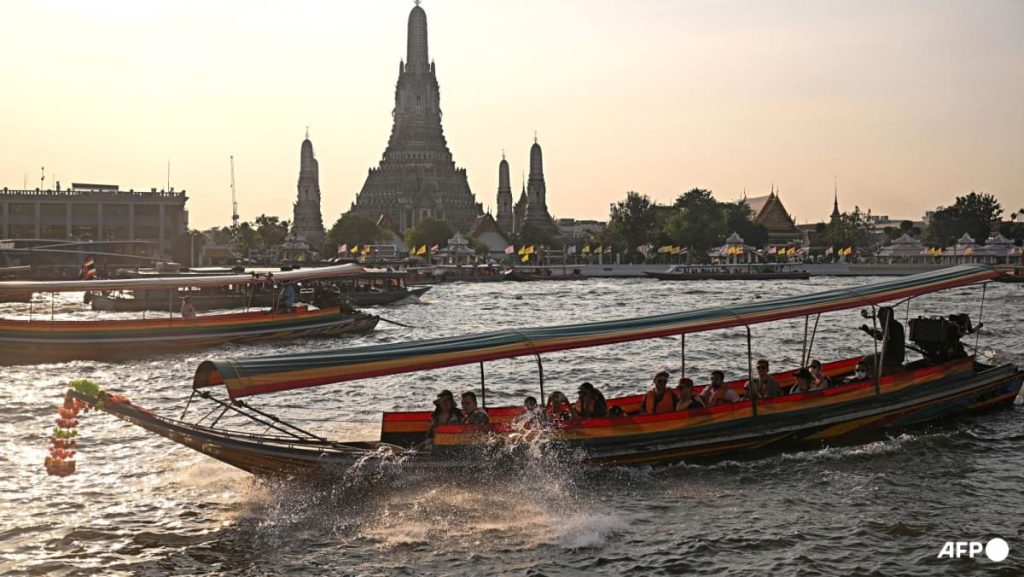Thailand’s tourism sector, a cornerstone of its economy representing nearly 20% of its GDP, experienced a resurgence in 2024, exceeding the government’s target by welcoming over 35 million international tourists. This signifies a substantial recovery from the setbacks caused by the COVID-19 pandemic and evolving travel patterns, although it still falls short of the pre-pandemic peak of nearly 39 million visitors recorded in 2019. The revival of tourism injected over 1.6 trillion baht (US$46 billion) into the Thai economy, highlighting the sector’s crucial role in driving national economic growth and recovery. This positive trajectory sets the stage for further growth, with the government aiming for 39 million visitors in 2025, demonstrating a renewed optimism for the future of Thai tourism.
The return of Chinese tourists has played a significant role in this recovery. China reclaimed its position as the leading source of visitors, with over 6 million arrivals in 2024. This resurgence underscores the importance of the Chinese market to Thai tourism, despite the post-pandemic dip. Following closely behind were Malaysia and India, demonstrating a diversification of tourist origins and the increasing appeal of Thailand to travelers from various regions. This diversification can contribute to greater stability within the tourism sector, reducing reliance on any single market and mitigating potential risks associated with fluctuations in specific economies or travel restrictions.
The Thai government, under former Prime Minister Srettha Thavisin, implemented proactive measures to stimulate tourism, including visa waivers for Chinese and Indian tourists. This strategic move significantly lowered the barrier to entry for visitors from these two populous nations, making Thailand a more accessible and attractive destination. The success of these initiatives is evident in the exceeding of the 2024 target, demonstrating the effectiveness of government intervention in promoting tourism and attracting international visitors. The continued implementation of such targeted policies will be crucial for achieving future growth objectives and ensuring sustained recovery of the tourism sector.
While the overall number of tourists has shown impressive growth, the World Bank observes that individual tourist spending remains below pre-pandemic levels. This suggests a shift in travel behavior, possibly due to economic uncertainty, changing priorities, or the emergence of more budget-conscious travelers. Understanding and addressing this trend will be essential for maximizing the economic benefits of tourism. This could involve focusing on attracting higher-spending tourists, developing new high-value tourism offerings, or implementing strategies to encourage greater expenditure within the country.
The Thai government’s ambitious target of 39 million visitors for 2025 signifies its commitment to further strengthening the tourism sector. Achieving this goal will require sustained efforts in marketing and promotion, infrastructure development, and enhancing the overall tourist experience. It also necessitates adapting to the evolving needs and preferences of travelers, including offering diverse experiences, catering to different budgets, and ensuring a safe and welcoming environment. The World Bank’s projection that Thailand will surpass its pre-pandemic visitor numbers in 2025 provides further encouragement but highlights the ongoing need for strategic planning and proactive measures to ensure sustainable growth.
Looking forward, the continued growth and resilience of Thailand’s tourism sector will depend on several factors, including global economic conditions, regional stability, and the ability to manage potential health crises effectively. Further diversification of tourism source markets will also be crucial for mitigating risks and ensuring a more balanced and sustainable tourism industry. By fostering a welcoming environment, investing in infrastructure, and offering a diverse range of experiences, Thailand can solidify its position as a leading global tourist destination and ensure that tourism continues to be a key driver of its economic prosperity. The government’s proactive approach, coupled with the inherent appeal of Thailand’s natural beauty, cultural richness, and warm hospitality, provides a strong foundation for the sustained growth and development of its vibrant tourism sector.

